Acoustic emission recording
Acoustic emission (AE) is the process of elastic oscillations (acoustic waves) emergence during stressed material deformation.
Acoustic emission (AE) signal conversion to electrical signal is performed by means of acoustic emission transducers. For the purpose of acousting emission recording it is possible to use acoustic emission transducers of several types – their choise is determined by controlled object’s parameters, acoustic emission sources and other task-related factors. In this case study we shall consider BC601 acoustic emission sensor and ZET 7140-E Acoustic emission sensor with an integrated amplifier.
Digital sensor ZET 4140-E (with an integrated amplifier) is used for acoustic emission recording in the frequency range from 15 kHz up to 20 mHz. Use of intelligent sensors does not require adjustment of measuring channles or data processing – acoustic emission transducer parameters are set in the intelligent sensor integrated memory (i.e. measurements are performed in accordance with these characteristics).
Case study: hydrochloric acid is placed inside of aluminium wafer opening. This leads to an increased possibility of microcracks and acoustic emission occurence in the affected area. Besides, acoustic emission is also caused by corrosion process (in the case if the aluminium wafer is not pulled up).
Figure 1 shows set-up for acoustic emission recording and registering.
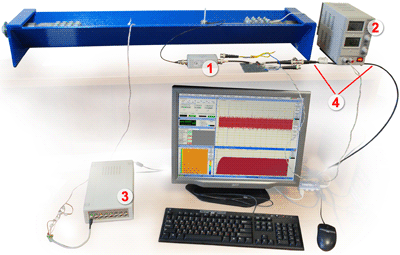
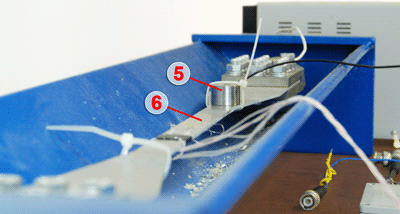
1 — Preamplifier GT200A
2 — Power module for the preamplifier (12..24) V 30 mA
3 — Strain gauge station ZET 017‑T8
4 — Signal cable from preamplifier output to ADC / DAC 14/2 input
5 — Acoustic emission transducer GT300
6 — Resistive strain sensors
Figure 1- Set-up for acoustic emission recording and registering
ZET 017‑T8 digital strain-gauge station is used for wafer strain control. Foil strain gauge sensors are connected by bridge circuit scheme.
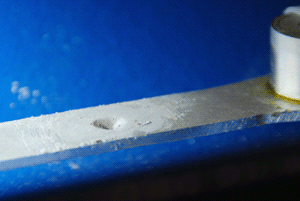
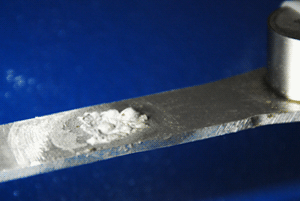
Figure 2 — Aluminium wafer before and after of acid impact
Figure 3 shows background signal processed by HF 40 kHz filter (using the Software “Signals filter”).
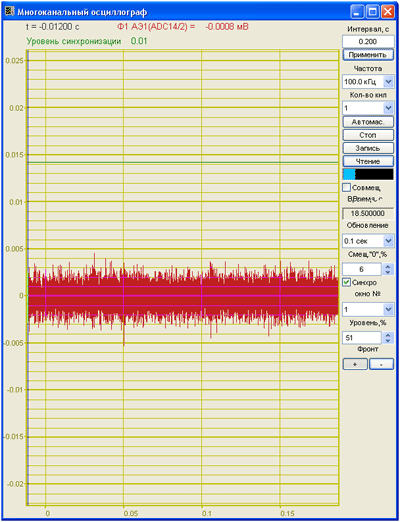
Figure 3 — Background signal
Figure 4: signal received in the result of acid impact on aluminium wafer.
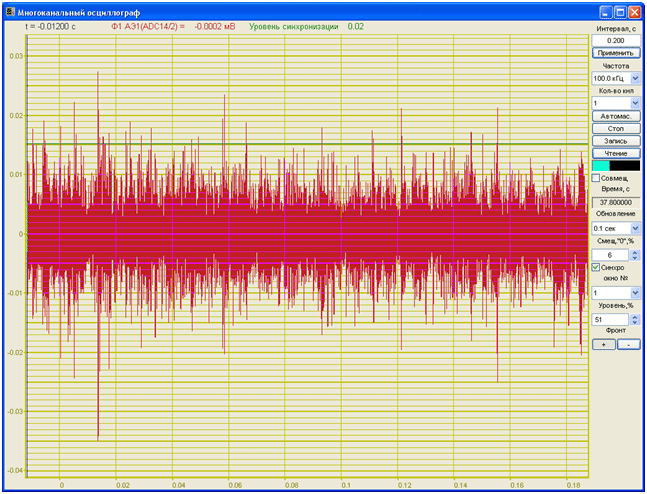
Figure 4 — Acid impact signal
Figure 5: registered impulse (amplitude value over 0,1 mV).
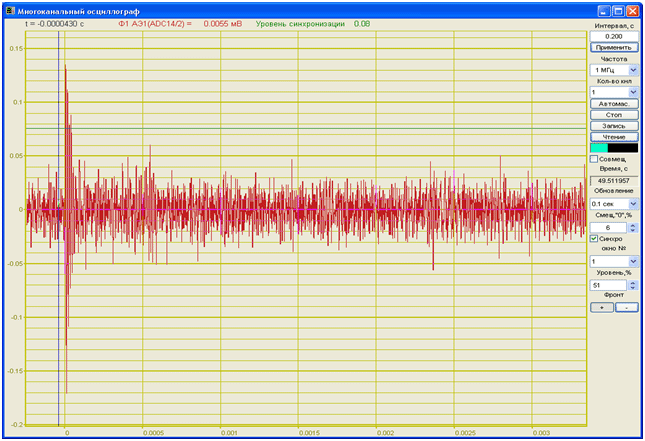
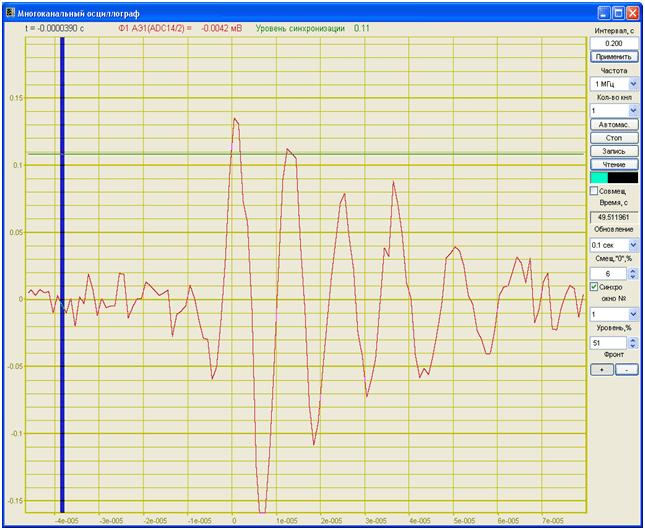
Figure 5 — impulse with amplitude value over 0,1 mV
For the purpose of acoustic emission recording (in the range below 50 kHz) one can use FFT spectrum analyzer A19. In this case the sensor can be directly connected to the FFT spectrum analyzer input (without the use on an external pre-amplifier), since FFT spectrum analyzer A19 has an integrated amplifier.
For the puprpose of acoustic emission recording of low-frequency signals one can connect acoustic emission sensor to FFT spectrum analyzer A19-U2 via amplifier GT200A or ZET440.
